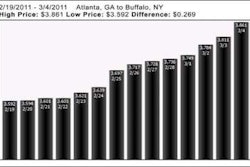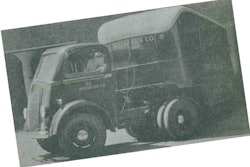In comments filed March 4, the American Trucking Associations again called on the Federal Motor Carrier Safety Administration to abandon its proposal to revise the hours-of-service rules and retain the current rules. ATA deems the proposed changes as politically motivated, while it says the current rules are based on science and have been proven to function safely.
“In its current HOS proposal, the agency has abandoned years of objective analysis in favor of speculation and internal ‘judgments’ of critical areas,” ATA said in its comments. “The agency’s approach in the current HOS proposal cannot be squared with its prior factual conclusions and analytical approach; is contrary to the real-world circumstances to which the rules apply; and its financial computations whither under objective scrutiny. In short, the agency is far from making any sort of case that the HOS rules should be changed and the obvious strains in its attempt to justify those changes illustrates how ill-considered they are.”
The current hours-of-service rules, which have been in effect since January 2004, made four primary changes to the regulations then in place: increasing the daily driving limit from 10 hours to 11 hours; increasing the required minimum daily rest from 8 hours to 10 hours; decreasing the number of hours on duty after which a driver may not operate a commercial motor vehicle from 15 hours to 14 hours; and allowing a driver to “reset” the weekly 60 or 70-hour on duty limits with 34 consecutive hours off duty. Under the current proposal, FMCSA is, among other changes, considering whether to reduce the daily driving limit from 11 hours to 10 hours and has proposed to limit the 34-hour restart provision by requiring that it include two periods from midnight to 6 a.m. and limiting its use to once per week.
In its comments, ATA points out that since the basic framework of the rules went into effect in 2004, “truck safety has improved to unprecedented levels” as the “numbers of truck-related injuries and fatalities have both dropped more than 30 percent to their lowest levels in recorded history.” ATA also told FMCSA that despite claims by the agency and anti-truck activists that the reduction in crashes is the result of a slumping economy, “truck mileage has actually increased.” ATA went on to point out that even those who choose not to believe the current hours-of-service rules are at least partly responsible for these improvements in truck safety must surely agree that the rules did not harm it.
Rather than change the rules, ATA told FMCSA that focusing on improving compliance with the current regulations would do more to improve highway safety. “Promoting compliance with the current hours of service rules is a very good recipe for reducing crashes,” ATA said, pointing to the agency’s own data that demonstrates a strong correlation between compliance with the current hours-of-service rules and low crash rates. “Changing the rules only leaves safety to chance.”
ATA also pointed to independent reviews of FMCSA’s analysis that found the agency wildly overstated, and in some cases invented from whole cloth, the alleged benefits of its proposed changes. “The agency had made numerous crucial errors in its assessment that individually and cumulatively render its conclusions meaningless,” ATA said, adding that a sleep researcher upon whose work the agency leaned heavily to justify the proposed changes accused the agency of misapplying his work to support its claims.
“The changes proposed by FMCSA will have virtually no benefit in terms of reducing fatigue-related truck crashes and, in fact, will create other types of truck safety concerns such as promoting aggressive driving and driving during peak hours of congestion,” ATA concluded.












